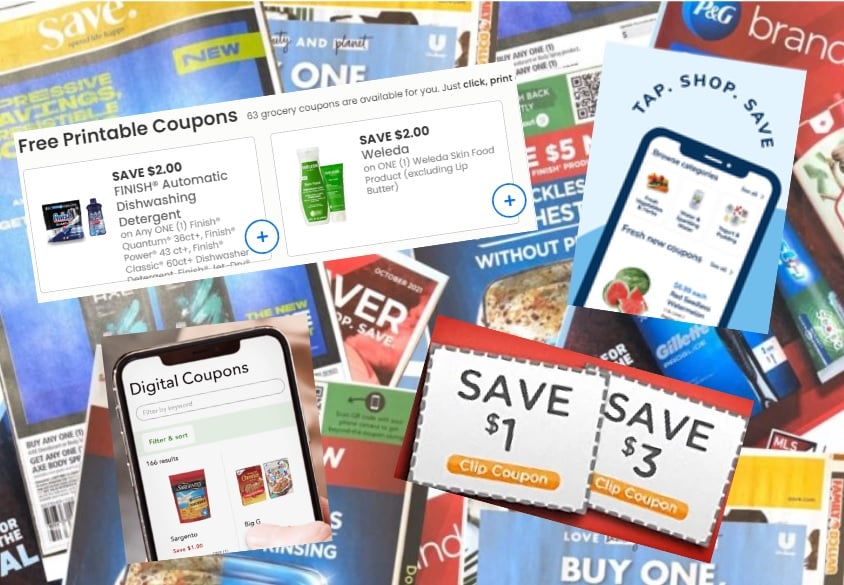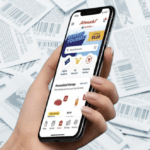
“Spurred by a sour economy, coupon redemption is up while distribution soars to record highs.” For the very first time, “more than one billion coupons were redeemed last year at food markets and other retail outlets.”
Unfortunately, neither of those things is true today. The first quote comes from an Inmar Intelligence report on coupon usage – in 2009. The second quote comes from the Los Angeles Times, about coupon usage way back in 1965.
Today, U.S. consumer sentiment is nearly as low as it was during the Great Recession in 2009, when coupon use soared. Yet the number of coupons used over the past year is even lower than it was in 1965. So economic concerns and stretched grocery budgets aren’t corresponding with increased coupon usage like they used to.
Those are some of the takeaways from Inmar Intelligence’s latest look at coupon statistics from the past year. While it’s found that inflation-wary shoppers are becoming more interested in using coupons, the number of coupons both offered and redeemed is continuing a years-long decline.
Inmar calculated that 177 billion coupons were offered last year, down 12% from the previous year. And coupon redemption dipped below the one-billion mark for the first time in nearly 60 years. While an earlier report by Vericast estimated the total number of coupons redeemed to be 865 million, Inmar’s number was 970 million – quite a difference, but still enough by Inmar’s calculations to be down 7% from the previous year.
While Vericast analyzed the reasons for the slump, including an ongoing decline in newspaper circulation and recent supply chain disruptions, Inmar chose to focus on the positive – consumers say they still want coupons, and are ready to use them, if they can help save money on what they want and need to buy.
While newspaper coupon inserts are still the source of nearly 90% of all coupons distributed, shoppers who don’t buy the newspaper regularly anymore aren’t using insert coupons as often. They’re turning to digital coupons, which are now the number-one coupon redemption method, representing a third of all coupons redeemed. 67% of the shoppers surveyed by Inmar said they used digital grocery coupons last year.
But 64% also said they used paper coupons last year. And only 16% said digital load-to-card coupons were their preferred method of receiving and redeeming coupons. While paper preferences were scattered among various formats, including insert coupons, mailed coupons and different forms of in-store coupons, the vast majority of shoppers still preferred some type of paper coupon. Even among tech-savvy millennials, 82% of whom said they used digital coupons last year, 72% of them said they used paper coupons as well.
So digital coupon use is growing rapidly, but only a small minority of shoppers actually prefer the format. Newspapers remain the primary distribution method for coupons, but far fewer people are even getting the newspaper anymore. And among those who do, many are turned off by the fact that the number of coupons for food items – the most popular type of coupons – slumped a further 26% last year, as nonfood items like household supplies and personal care products made up an ever-greater percentage of all coupons distributed.
Declining coupon use, then, could be attributed to the fact that shoppers simply don’t like what they’re being offered, or how it’s being offered. It’s not that shoppers don’t like coupons anymore – because they’re telling Inmar that they do.
78% of those surveyed say coupons are important to them because of inflation and rising prices, 75% use coupons to help determine what goes on their shopping list, and 67% said coupons changed their shopping behavior – either by encouraging them to buy a new product, a new brand or a brand they had purchased before. 26% of shoppers said they’re now using coupons more often than they used to.
So you could say the coupon industry, and coupon users, are still in a state of transition, in which the coupons being offered and the coupons that shoppers want still aren’t quite aligning. Shoppers are using more digital coupons, but many are apparently doing so somewhat grudgingly. Paper coupons are still popular, but declining newspaper circulation shows that more shoppers are turning away from the primary paper coupon distribution method. Shoppers say they want coupons for items they can buy to feed their families, yet nonfood coupons now make up more than 80% of all coupons distributed. We’re using fewer coupons than our grandparents did, yet the vast majority of us say we want to use more.
Now that shoppers are really feeling the pinch of higher prices, and brands risk losing sales to lower-cost store brand products, could this be the year that coupon use finally perks up? Much of it will depend on whether brands start offering more coupons that shoppers actually want to use, in the formats they prefer. And then, we just might start couponing like it’s 1965 again.
















So frustrating. I just cancelled my Sunday newspaper because I just can’t justify the cost of delivery and tip with the small amount of coupons I am getting, which by the way, are extremely short dated and not many food product coupons. I wish the companies would wake up and get back to paper coupons for food and instead of putting out $1 off 3, how about make it off one but just give a smaller amount off. As empty nesters, buying 3 to save a dollar just isn’t worth it and so I am swayed toward store brand. I prefer paper coupons because my grocery store does not take digital; it’s strictly paper only.